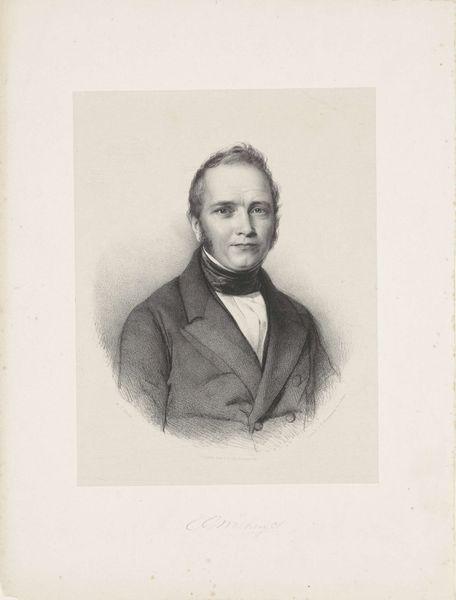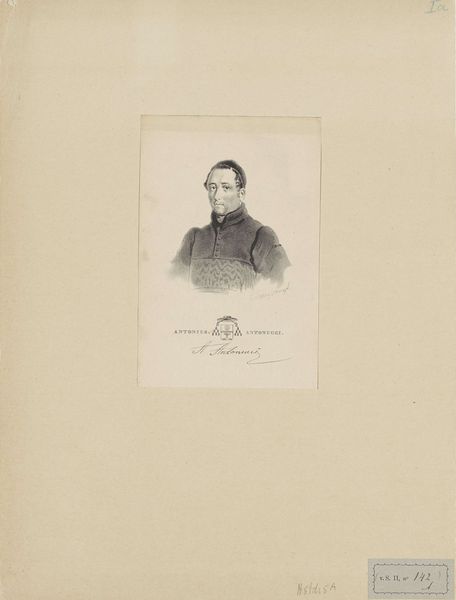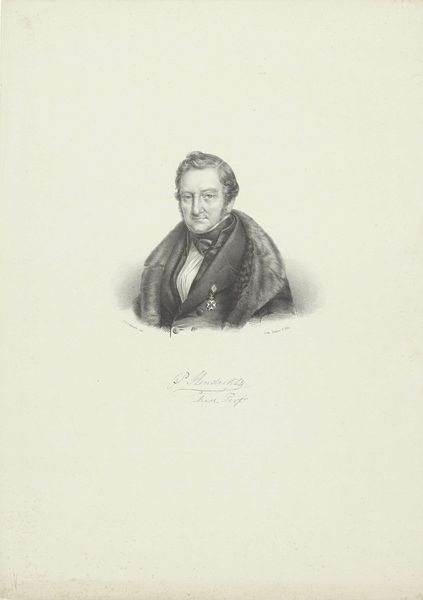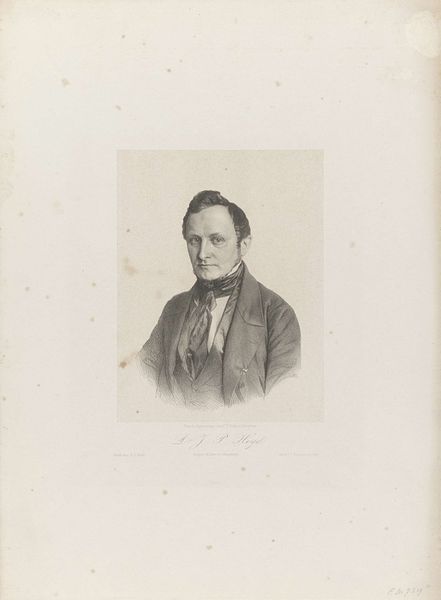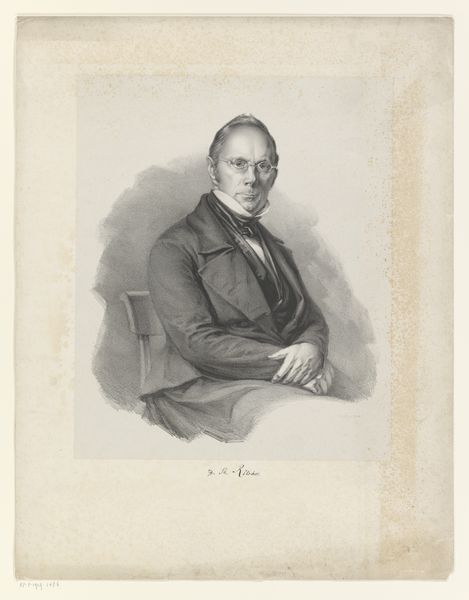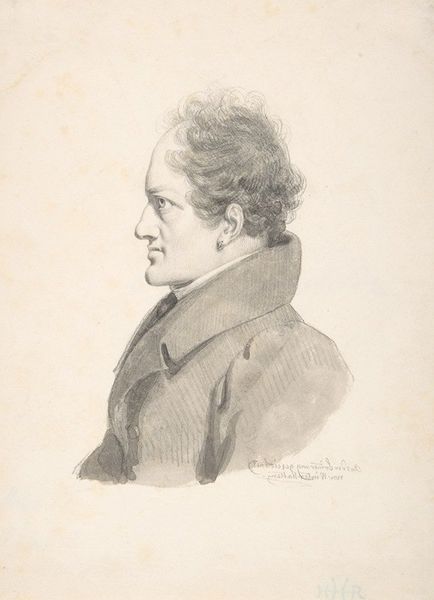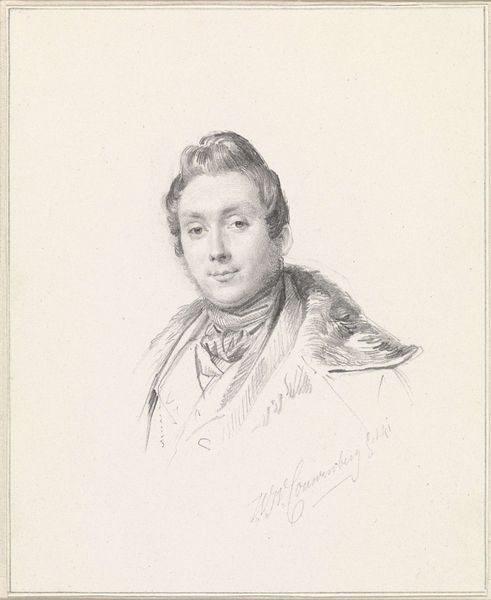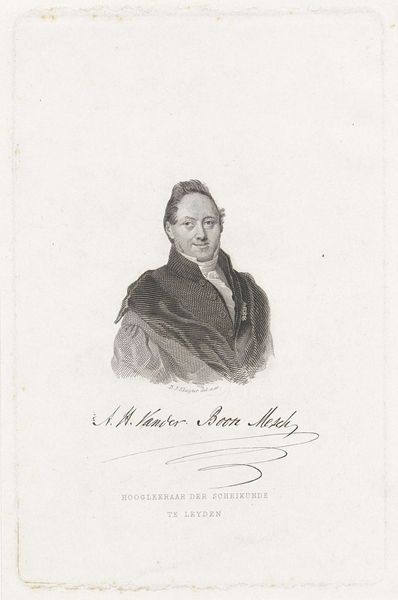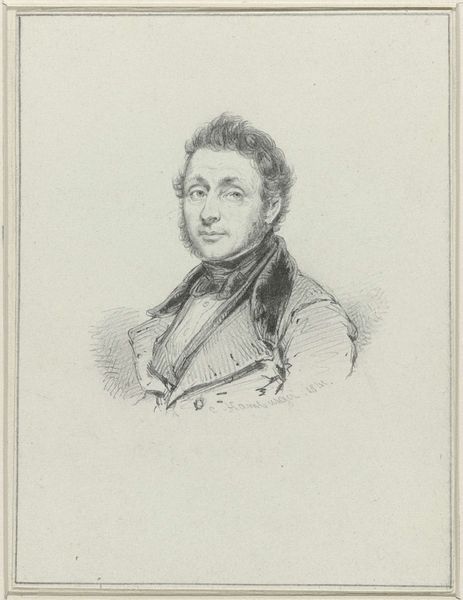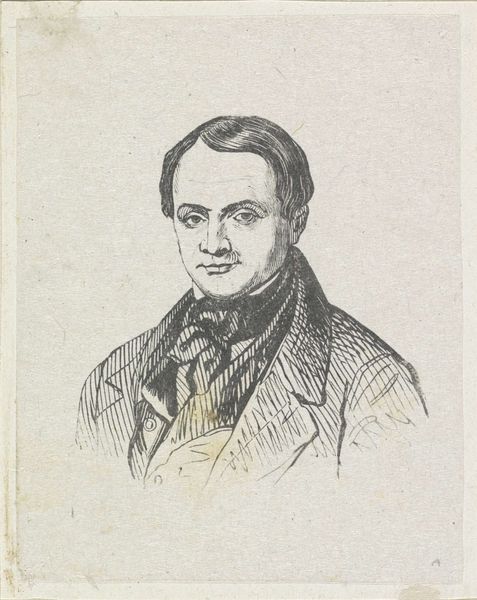
drawing, pencil, graphite
#
portrait
#
pencil drawn
#
drawing
#
self-portrait
#
pencil drawing
#
pencil
#
graphite
#
academic-art
Dimensions: height 114 mm, width 91 mm
Copyright: Rijks Museum: Open Domain
Editor: Here we have Henri Van der Haert's self-portrait, created with graphite between 1840 and 1842. It has a delicate, almost faded quality to it. What strikes you most about this drawing? Curator: Primarily, the masterful manipulation of line and shadow commands attention. Observe how Van der Haert employs hatching and cross-hatching techniques to articulate the nuances of form and texture. Note the delicate gradations in tone, particularly around the eyes and the fur collar, which suggests a sophisticated understanding of chiaroscuro. Editor: So, it's more about the "how" than the "who" in this portrait? Curator: Precisely. The success of this piece resides not in its biographical significance, but in its formal construction. Consider the composition – the placement of the figure within the frame, the subtle asymmetry of the face. How does the artist’s gaze, rendered through careful shading, engage the viewer? Editor: The intensity of the gaze is intriguing, given the softness of the medium. It is created using small details and an emphasis on symmetry. Does that contrast mean something? Curator: Perhaps the intention is to create a powerful and impressive depiction of the self while using basic tools such as a graphite pencil. Furthermore, it raises a question about the very nature of representation: can a drawing truly capture the essence of a person? Editor: This focus on technique gives me a whole new way to appreciate the drawing! I was caught up in the subject but now appreciate the actual artistic process. Curator: Indeed! A formalist lens allows us to transcend biographical details and engage with the artwork on its own terms.
Comments
No comments
Be the first to comment and join the conversation on the ultimate creative platform.



